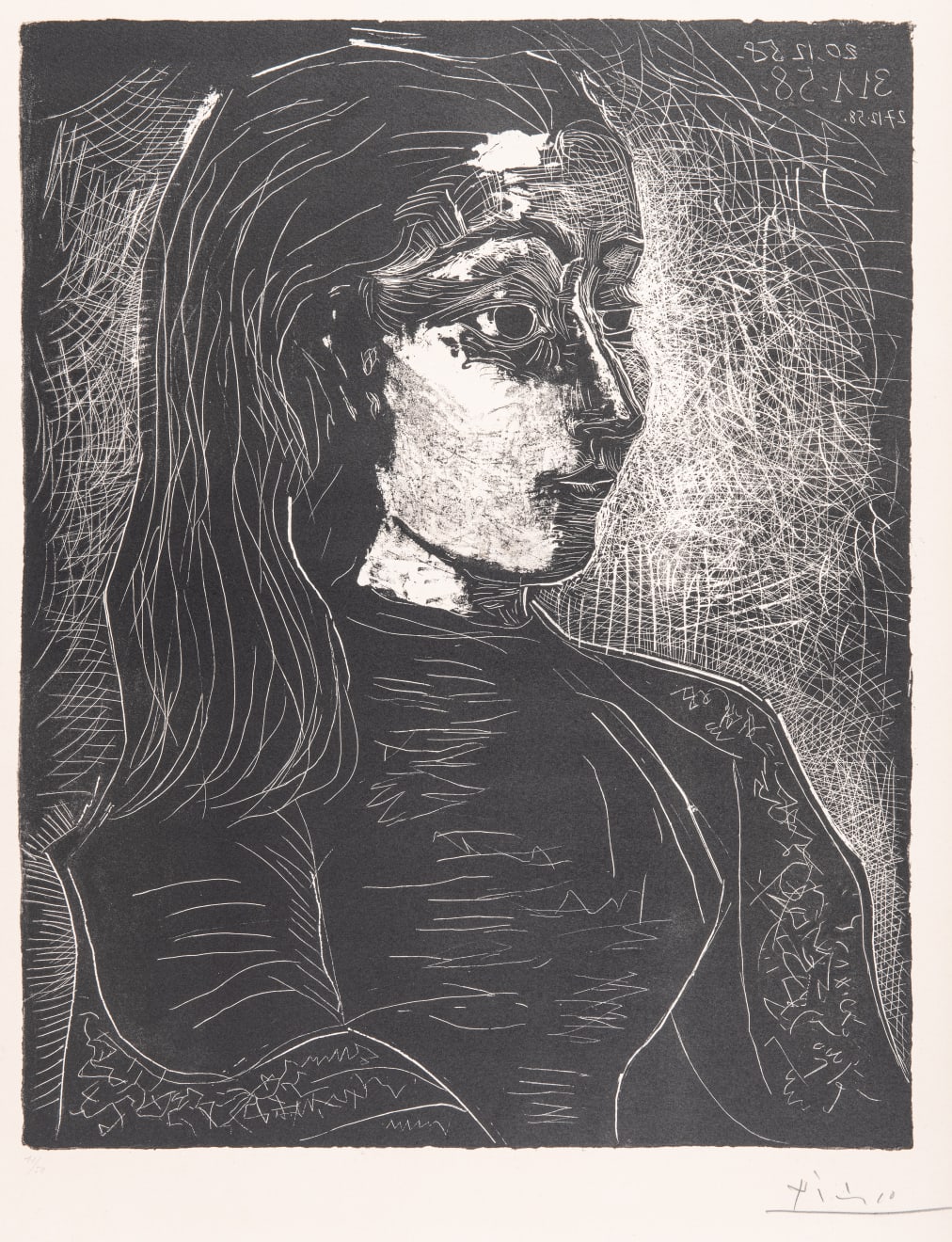PABLO PICASSO
Lithograph printed on Arches wove with Arches watermark
From the edition of 50
Signed in pencil, lower right
Printed by Mourlot, 1958-59
Published by Galerie Louise Leiris, 1958-59
Image: 22 x 17 3/8 inches
Sheet: 25 ¾ x 19 3/4 inches
(Bloch 854; Mourlot 310; Reuße 742)
Literature
Having relocated to the Côte d’Azur with Françoise Gilot, in the late 1940s, Picasso met Jacqueline in summer 1952 in the Madoura pottery workshops. Forty-five years Picasso’s junior, she shared his short stocky build and his large and brilliant dark eyes. By this time the artist’s relationship with Gilot was deteriorating, and Jacqueline quickly replaced her in his affections, becoming his lover, muse and eventually his wife—the last great female presence in Picasso’s life and the subject of innumerable paintings and prints produced in the 1950s and 1960s.
Picasso embarked on a series of portraits of Jacqueline in the summer of 1955. That December, he created the first state of six of the series of prints to which Jacqueline en profil à droitebelongs. The plates were transported to Mourlot’s workshop in Paris so that proofs could be printed and then taken back to Picasso in the south for his scrutiny. More than a year passed before the artist resumed work on the plates. On December 27, 1958, he developed them in one day, taking some through as many as three states.
The evolution of Jacqueline de profil à droite is remarkable—from the straight, line-drawn profile of the woman with a bun, whose striped bodice and shawl share the two-dimensional cartoon qualities of her face, through an abrupt shift into realistic three-dimensionality and a three-quarter view in the second state, before achieving the extraordinary combination of volumetric modeling and linear patterning that takes the image into a place beyond realism in the third state. Using a sharply pointed instrument, Picasso scratched fine lines into the zinc plate, highlighting the detail of Jacqueline’s features and hair with delicate white lines on the almost completely blackened ground. Fine white lines describe the portrait’s outlines against the black background and vigorous cross-hatching behind the contours of the left side of the face makes it appear illuminated by a mysterious light in the manner of a religious icon.
